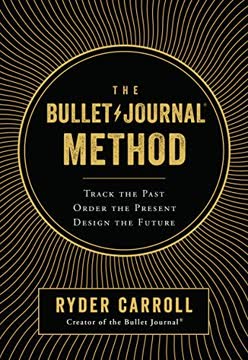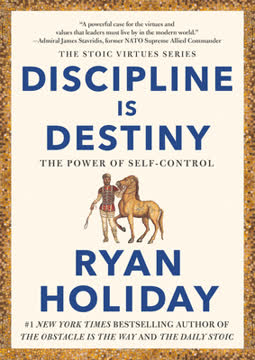Key Takeaways
1. Productivity is the fusion of creativity and efficiency
Productivity = Creativity × Efficiency.
Balanced approach. True productivity stems from the harmonious blend of creative thinking and efficient execution. Creativity fuels innovation and problem-solving, while efficiency ensures timely completion of tasks. Neither alone is sufficient; both are necessary for optimal productivity.
Practical application. To enhance productivity:
- Allocate dedicated time for creative brainstorming and idea generation
- Implement efficient systems and processes to streamline routine tasks
- Regularly evaluate and refine your methods to maintain a balance between creativity and efficiency
- Embrace tools and techniques that boost both aspects, such as mind mapping for creative thinking and time-blocking for efficient task management
2. Consistent, focused attention drives success
If you give sufficient, regular, focused attention to a project then it will move.
Power of persistence. Success in any endeavor is largely determined by the amount of consistent, focused attention devoted to it. This principle applies across various fields, from artistic pursuits to business ventures and personal goals.
Implementing focused attention:
- Establish a daily routine that allocates specific time for your most important projects
- Eliminate distractions during your work sessions (e.g., turn off notifications, use website blockers)
- Practice the "little and often" approach: work on your project regularly, even if only for short periods
- Monitor your progress to maintain motivation and adjust your strategies as needed
- Recognize that major achievements often result from sustained effort over time, not sporadic bursts of activity
3. Embrace failure as a learning opportunity
Failure is your friend.
Reframe failure. Instead of viewing failure as a setback, productive people see it as a valuable learning experience. This mindset shift allows for continuous improvement and resilience in the face of challenges.
Strategies for learning from failure:
- Analyze failures objectively to identify areas for improvement
- Document lessons learned from each failure to avoid repeating mistakes
- Cultivate a growth mindset that views failures as stepping stones to success
- Share failures and lessons learned with others to foster a culture of open communication and learning
- Set realistic expectations and recognize that failure is an inherent part of any ambitious endeavor
Remember that many successful individuals and companies have experienced numerous failures before achieving their goals. Embrace failure as a necessary part of the journey to success.
4. Prioritize essential work and prune commitments
Keep what you are actually using – not what you think you might use.
Focus on essentials. Productivity isn't about doing more; it's about doing what matters most. By identifying and prioritizing essential tasks and commitments, you can maximize your impact and reduce wasted effort.
Practical prioritization:
- Regularly review your commitments and eliminate those that no longer align with your goals
- Use the Eisenhower Matrix to categorize tasks based on urgency and importance
- Implement the 80/20 rule (Pareto Principle) to identify the 20% of activities that yield 80% of your results
- Practice saying "no" to non-essential requests and opportunities
- Periodically reassess your priorities to ensure they remain aligned with your long-term objectives
By ruthlessly pruning non-essential commitments, you create space for deep work and meaningful progress on your most important goals.
5. Develop robust systems and routines
Efficiency is doing better what is already being done.
Systems for success. Developing effective systems and routines is crucial for long-term productivity. Well-designed systems automate decision-making, reduce cognitive load, and ensure consistent progress towards your goals.
Creating effective systems:
- Identify recurring tasks and processes in your work and personal life
- Design step-by-step procedures for handling these tasks efficiently
- Use checklists and templates to standardize repetitive work
- Leverage technology to automate routine tasks where possible
- Regularly review and refine your systems to eliminate bottlenecks and improve efficiency
Examples of productive routines:
- Morning ritual to set intentions for the day
- Weekly review to assess progress and plan for the upcoming week
- Daily time-blocking to allocate focused work periods
- End-of-day routine to wrap up tasks and prepare for tomorrow
Remember that the goal of systems and routines is to free up mental energy for creative and high-value work.
6. Harness the power of questioning and experimentation
All life is an experiment. The more experiments you make the better.
Curiosity drives innovation. Productive people cultivate a questioning mindset and are not afraid to experiment with new approaches. This attitude leads to continuous improvement and breakthrough insights.
Implementing a questioning approach:
- Regularly challenge assumptions and established practices
- Ask "why?" multiple times to uncover root causes of problems
- Use the "5 Whys" technique to dig deeper into issues
- Encourage curiosity and questioning in team environments
- Set aside time for "what if" scenarios and brainstorming sessions
Experimentation strategies:
- Conduct small-scale tests of new ideas before full implementation
- Use A/B testing to compare different approaches
- Set clear metrics to evaluate the success of experiments
- Embrace failure as a valuable source of data and learning
- Share results of experiments, both successes and failures, with your team or community
By fostering a culture of questioning and experimentation, you create an environment conducive to innovation and continuous improvement.
7. Leverage technology and data for informed decision-making
The first rule of any technology used in a business is that automation applied to an efficient operation will magnify the efficiency. The second is that automation applied to an inefficient operation will magnify the inefficiency.
Data-driven decisions. In today's digital age, leveraging technology and data is crucial for making informed decisions and optimizing productivity. However, it's essential to use technology wisely and ensure that it enhances rather than hinders your efficiency.
Effective use of technology and data:
- Identify key performance indicators (KPIs) relevant to your goals
- Implement tools to track and visualize these KPIs
- Use data analytics to identify trends and patterns in your work
- Automate repetitive tasks using appropriate software and tools
- Regularly review and update your technology stack to ensure it meets your evolving needs
Cautions:
- Avoid "shiny object syndrome" – only adopt new technologies that genuinely improve your productivity
- Ensure data privacy and security when handling sensitive information
- Be mindful of the potential for technology to become a distraction
- Maintain a balance between data-driven decisions and human intuition
Remember that technology and data should serve as tools to enhance your productivity, not as ends in themselves.
8. Balance work with rest and recreation
There is more refreshment and stimulation in a nap, even of the briefest, than in all the alcohol ever distilled.
Holistic productivity. True productivity isn't about working non-stop; it's about maintaining a sustainable balance between work, rest, and recreation. Regular breaks and leisure activities are essential for maintaining high levels of creativity and efficiency.
Strategies for work-life balance:
- Schedule regular breaks throughout your workday (e.g., Pomodoro Technique)
- Practice proper sleep hygiene to ensure adequate rest
- Engage in hobbies and activities unrelated to work
- Use vacation time to fully disconnect and recharge
- Incorporate physical exercise into your routine for improved mental clarity
Benefits of balanced approach:
- Reduced stress and burnout
- Improved focus and creativity
- Enhanced overall well-being
- Increased long-term productivity and job satisfaction
Remember that rest and recreation are not indulgences, but necessary components of a productive life.
9. Cultivate a growth mindset and continuous improvement
We cannot become what we want to be by remaining what we are.
Embrace lifelong learning. Productive individuals recognize that there is always room for improvement and actively seek opportunities to grow and develop their skills. This growth mindset enables them to adapt to changing circumstances and continuously enhance their productivity.
Fostering a growth mindset:
- View challenges as opportunities for learning and growth
- Embrace constructive criticism and feedback
- Set challenging but achievable goals to stretch your capabilities
- Celebrate effort and progress, not just end results
- Cultivate curiosity and a love for learning new things
Continuous improvement strategies:
- Regularly assess your skills and identify areas for development
- Seek out mentors and role models in your field
- Attend workshops, conferences, and training sessions
- Read widely and stay updated on industry trends
- Practice deliberate learning by focusing on specific skills or knowledge areas
By cultivating a growth mindset and committing to continuous improvement, you ensure that your productivity continues to evolve and expand over time.
Last updated:
FAQ
What's Secrets of Productive People about?
- Focus on Techniques: The book presents 50 techniques designed to enhance productivity across various life aspects, from work to personal projects.
- Creativity and Efficiency: It emphasizes the formula Productivity = Creativity × Efficiency, highlighting the need for both elements to achieve results.
- Historical Examples: The author uses historical figures like Isaac Newton and Henry Ford to illustrate how their productivity principles can be applied today.
Why should I read Secrets of Productive People?
- Practical Techniques: Offers actionable techniques that can be implemented immediately to improve daily productivity.
- Mindset Shift: Encourages viewing productivity as a blend of creativity and systematic work, not just efficiency.
- Personal Growth: Teaches how to grow abilities through deliberate practice, fostering personal development.
What are the key takeaways of Secrets of Productive People?
- Embrace Failure: Encourages learning from mistakes, viewing failure as a friend rather than a foe.
- Focus on Essentials: Stresses the importance of prioritizing essential tasks over busy work.
- Consistency is Crucial: Highlights that small, consistent disciplines lead to significant achievements over time.
What are the best quotes from Secrets of Productive People and what do they mean?
- “Eighty percent of success is showing up.”: Emphasizes the importance of being present and engaged to achieve success.
- “If you can meet with Triumph and Disaster and treat those two impostors just the same…”: Encourages maintaining a balanced perspective on success and failure.
- “The secret to living your life to its potential is to value the important stuff above your own comfort.”: Suggests prioritizing meaningful work over comfort for greater fulfillment.
How does Secrets of Productive People define productivity?
- Combination of Elements: Defines productivity as the result of creativity and efficiency working together.
- Beyond Task Completion: Emphasizes that productivity involves the quality and creativity of work, not just task completion.
- Continuous Improvement: Encourages questioning processes and seeking improvements to enhance productivity.
What is the Five Task System in Secrets of Productive People?
- Simple Task Management: Involves writing down five manageable tasks to focus on each day.
- Dynamic Adjustments: Uncompleted tasks are crossed off and re-entered at the end of the list for continuous progress.
- Daily Fresh Start: Each day begins with a new list, preventing task accumulation and maintaining focus.
What techniques does Secrets of Productive People suggest for overcoming procrastination?
- Little and Often: Advocates breaking tasks into smaller parts and working on them regularly.
- Salami Slicing: Suggests identifying the smallest possible first step to make starting easier.
- Set Fixed Breaks: Incorporating scheduled breaks helps maintain focus and prevent burnout.
How can I manage interruptions according to Secrets of Productive People?
- Integrate Interruptions: Treat interruptions as part of your work and integrate them into daily commitments.
- Develop Systems: Establish systems to handle interruptions, minimizing their impact on productivity.
- Set Boundaries: Create boundaries to reduce unnecessary interruptions and protect time for essential tasks.
What is the Productivity Time Management System in Secrets of Productive People?
- Self-Limiting Characteristics: Focuses on accomplishments rather than pending tasks to understand work capacity.
- Daily Reflection: Encourages end-of-day reviews to adjust commitments and prioritize effectively.
- Avoiding Clutter: Helps keep commitments well-pruned, reducing mental clutter and stress.
How does Forster suggest we maintain focus on our commitments?
- Regular Attention: Advises giving regular, focused attention to commitments to keep them active.
- Questioning Techniques: Encourages using questions to clarify goals and maintain focus.
- Avoiding Overcommitment: Stresses the importance of being realistic about capacity to maintain focus.
What is the significance of "pruning" commitments in Secrets of Productive People?
- Keep Relevant Commitments: Involves assessing and removing commitments that no longer serve you.
- Quality Over Quantity: Emphasizes having fewer, meaningful commitments for greater effectiveness.
- Regular Review Process: Suggests regular reviews to adapt to changing priorities and avoid overwhelm.
How can I achieve a state of flow according to Secrets of Productive People?
- Aim for Challenge: Engage in tasks that challenge without overwhelming to maintain interest and motivation.
- Purposeful Attention: Being fully engaged in tasks leads to a more productive and enjoyable experience.
- Consistency is Key: Establishing routines allows for regular engagement, making it easier to achieve flow.
Review Summary
Secrets of Productive People receives mixed reviews, with an average rating of 3.98/5. Readers appreciate the unique insights on productivity, particularly questioning to-do lists and working "little and often." Many find the book's advice practical and applicable, praising its structure and readability. Some critics note that the book contains familiar concepts and may be too long. Several readers highlight the author's emphasis on developing personalized systems and habits for improved productivity. While some find the techniques helpful, others express skepticism about long-term effectiveness.
Similar Books







Download PDF
Download EPUB
.epub digital book format is ideal for reading ebooks on phones, tablets, and e-readers.





